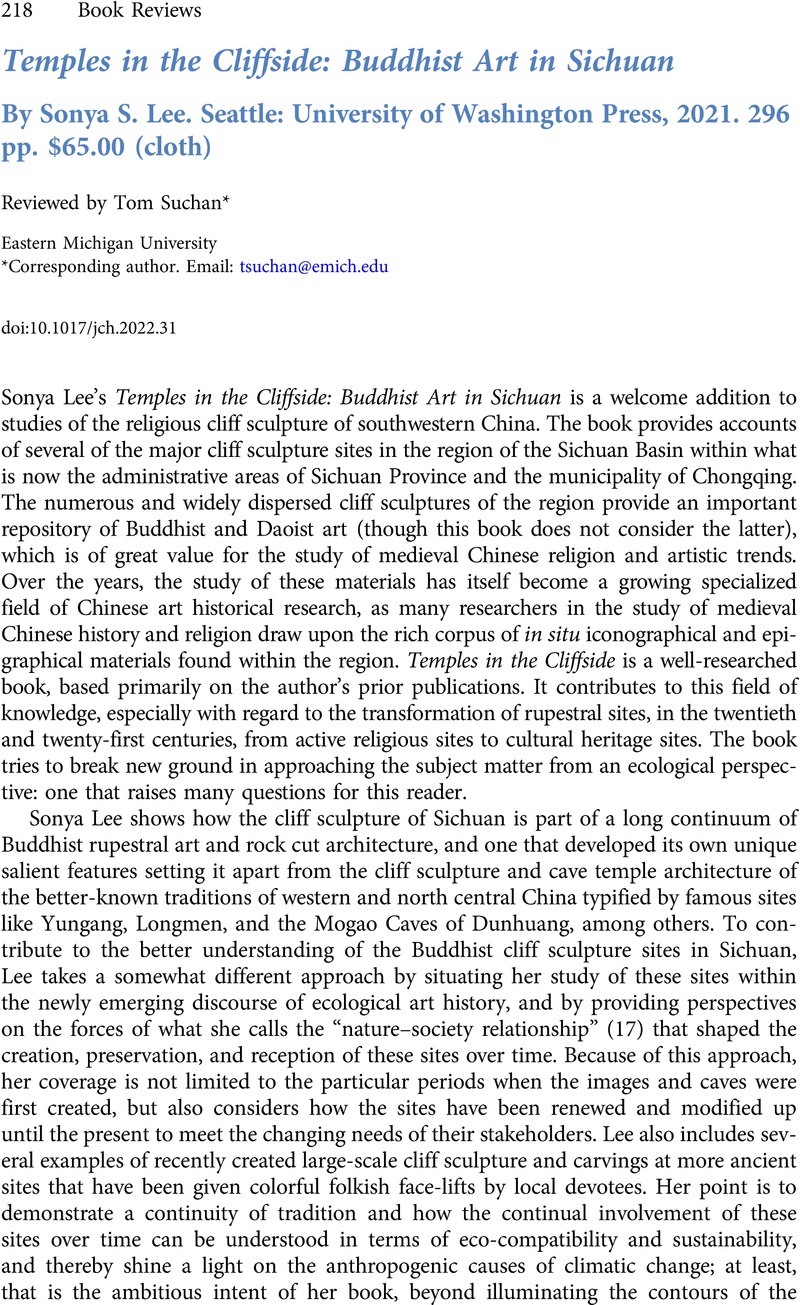No CrossRef data available.
Article contents
Temples in the Cliffside: Buddhist Art in Sichuan By Sonya S. Lee. Seattle: University of Washington Press, 2021. 296 pp. $65.00 (cloth)
Review products
Temples in the Cliffside: Buddhist Art in Sichuan By Sonya S. Lee. Seattle: University of Washington Press, 2021. 296 pp. $65.00 (cloth)
Published online by Cambridge University Press: 28 July 2022
Abstract
An abstract is not available for this content so a preview has been provided. Please use the Get access link above for information on how to access this content.

- Type
- Book Review
- Information
- Copyright
- Copyright © The Author(s), 2022. Published by Cambridge University Press



